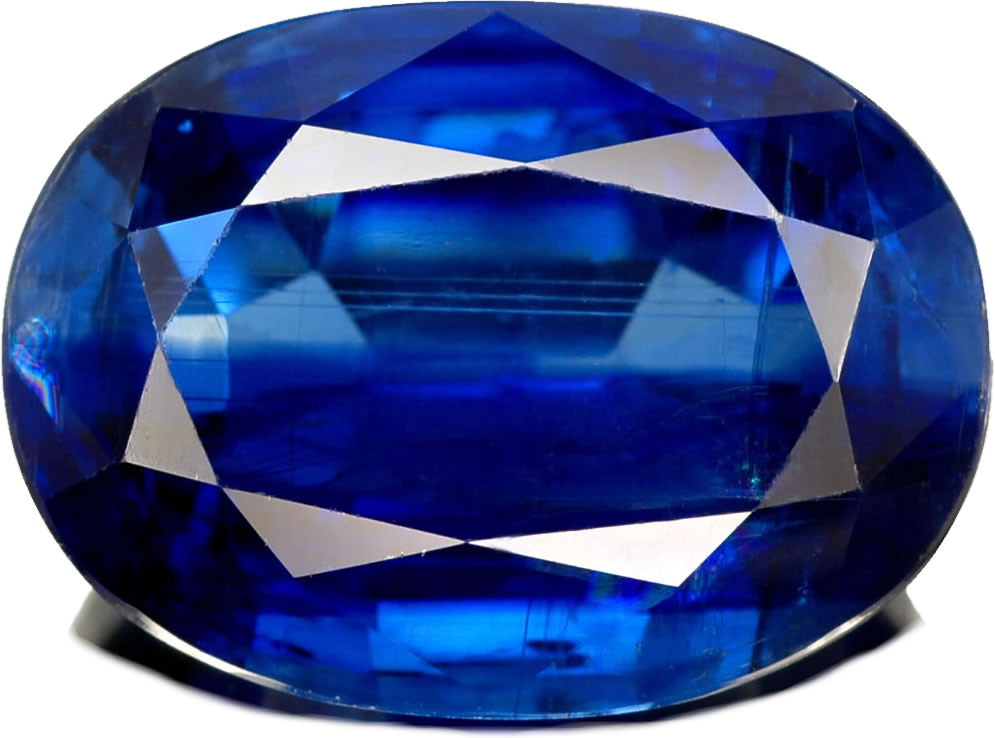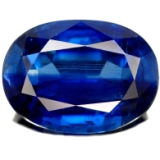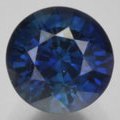Kyanite Gemstone Information

About Kyanite - History and Introduction
Kyanite is a captivating gemstone, celebrated for its vibrant colors and unique properties. Its hallmark is the stunning blue hue, but it can also dazzle in shades of colorless, white, gray, green, orange, or yellow. What makes kyanite stand out? Its pleochroism - meaning it shows different colors depending on the angle you view it from. You might catch light to dark zones or even white streaks in a single stone, giving it a dynamic, almost magical quality.
But there’s more to kyanite than its looks. It’s famous for its anisotropic nature, a fancy way of saying its properties change depending on the crystal’s direction. For instance, when cut along its long axis, kyanite’s hardness is about 4 to 4.5 on the Mohs scale - pretty soft! But cut it perpendicularly, and it jumps to 6 or 7. That’s a gem with some serious personality!
Identifying Kyanite
Spotting kyanite is a breeze once you know what to look for. Its dual hardness is a dead giveaway - soft along one axis, tougher along another, even in the same crystal. Add to that its characteristic color zoning, with streaks or blotches (often white), and you’ve got a gem that’s hard to mistake. This anisotropism, combined with its unique color patterns, sets kyanite apart from other gemstones.
Kyanite Origins
Kyanite pops up in metamorphic rocks like schist, gneiss, and pegmatites across the globe - think Brazil, Nepal, Switzerland, Australia, Myanmar, Kenya, Zimbabwe, and the United States. Each region adds its own flair, producing kyanite with distinct colors and traits. For example, the finest Nepalese kyanite gemstones are often compared to the finest blue sapphires from Ceylon or Madagascar. Recently, Tanzania gifted us orange kyanite, while Kenya’s Umba Valley has unveiled striking teal crystals. Talk about a world tour in gem form!
Buying Kyanite

Color
Kyanite’s most iconic shade is a rich, sapphire-like blue, though it also comes in colorless, white, gray, green, yellow, or orange. Colorless is rare but not the priciest - deep blue takes that crown. Expect uneven color distribution, with zones of lighter and darker shades or even white streaks in a single stone.
Clarity and Luster
Transparent kyanite is the most sought-after, though most stones have some visible flaws. Those color zones? They’re often mistaken for inclusions. When polished, kyanite shines with a vitreous to near-pearly luster, looking its best under daylight. Stones over 2 carats are rare and highly valued.
Cut and Shape
Cutting kyanite is tricky due to its variable hardness, so proper orientation is key. Transparent stones are usually faceted, while translucent ones are cut en cabochon, sometimes showing a cat’s eye effect. Popular shapes like ovals and pears preserve weight, but fancier cuts like rounds or hearts are rarer and pricier.
Treatment
Good news: kyanite is typically untreated. Some stones might get a light oiling to boost luster, but that’s rare. Be cautious, though - kyanite is sometimes passed off as pricier blue sapphire, so always buy from a trusted source.
Gemological Properties
| Chemical Formula: | Al2O[SiO4] Aluminum silicate |
| Crystal Structure: | Triclinic; long, flat prisms |
| Color: | Blue to colorless, blue-green, brown |
| Hardness: | 4 to 4.5 (along axes); 6 to 7 (across axes) on the Mohs scale |
| Refractive Index: | 1.710 to 1.734 |
| Density: | 3.53 to 3.70 |
| Cleavage: | Perfect |
| Transparency: | Transparent to translucent |
| Double Refraction: | -0.015 |
| Luster: | Vitreous to almost pearly |
| Fluorescence: | Weak: Red |
Related Gemstones

Kyanite shares a family tie with andalusite and sillimanite, all aluminum silicates but with different crystal structures due to their formation conditions. Kyanite’s triclinic crystals form under high pressure and lower temperatures, while andalusite and sillimanite have orthorhombic structures. It’s often mistaken for blue sapphire or topaz and can be found alongside minerals like talc, hornblende, quartz, almandine, and albite.
Metaphysical Properties
Kyanite is a favorite in the metaphysical world, believed to align chakras and bring balance to the body. It’s said to boost communication, creativity, and self-expression - perfect for anyone seeking clarity or a creative spark. Meditators love it for its calming effect, thought to aid spiritual growth and ease stress or anxiety. Here’s the cool part: kyanite is believed to never hold onto negative energy, so it never needs cleansing and can even purify other crystals.
Disclaimer: Metaphysical and crystal healing properties are not confirmed medical advice. This information is gathered from traditional and ceremonial sources and should not replace professional medical advice. Consult a licensed medical practitioner for any health concerns.
Jewelry Design Ideas
Kyanite is a budget-friendly alternative to blue sapphire, but its perfect cleavage and variable hardness mean it’s best for low-impact jewelry like earrings or pendants. Rings? Only if they’re set with cat’s eye kyanite and worn sparingly. Silver or white gold settings make its blue hues pop. Faceted kyanite sparkles brilliantly, while cabochons or beads offer a rustic, earthy vibe. Beyond jewelry, kyanite’s used in industrial applications like glass, ceramics, and even spark plugs - talk about versatile!
Note: Buy colored gemstones by size, not carat weight, as size-to-weight ratios vary. Some gems are denser or lighter than diamonds.
Gemstone Care

Kyanite’s a bit delicate compared to gems like sapphire or diamond, thanks to its perfect cleavage and softer nature. A hard knock could split it, so handle with care. Skip ultrasonic cleaners, steamers, or harsh chemicals - stick to mild soap and water, wiping gently with a soft cloth. Rinse well to remove soap residue. Remove kyanite jewelry before sports, exercise, or chores like dishwashing, and store it separately in a soft cloth or fabric-lined box to avoid scratches.
Frequently Asked Questions
What is kyanite?
Kyanite is a gemstone known for its blue hues and pleochroism, an aluminosilicate mineral with unique anisotropic properties.
How can I tell if kyanite is real?
Check for dual hardness (4-4.5 along one axis, 6-7 across) and color zoning with streaks, often white. Gemological testing confirms authenticity.
Is kyanite treated?
Kyanite is usually untreated, though some stones may be oiled to enhance luster. Always buy from reputable sources to ensure authenticity.
Can kyanite be used in rings?
It’s best for low-impact jewelry like earrings or pendants due to its cleavage and variable hardness. Rings should be worn cautiously.

